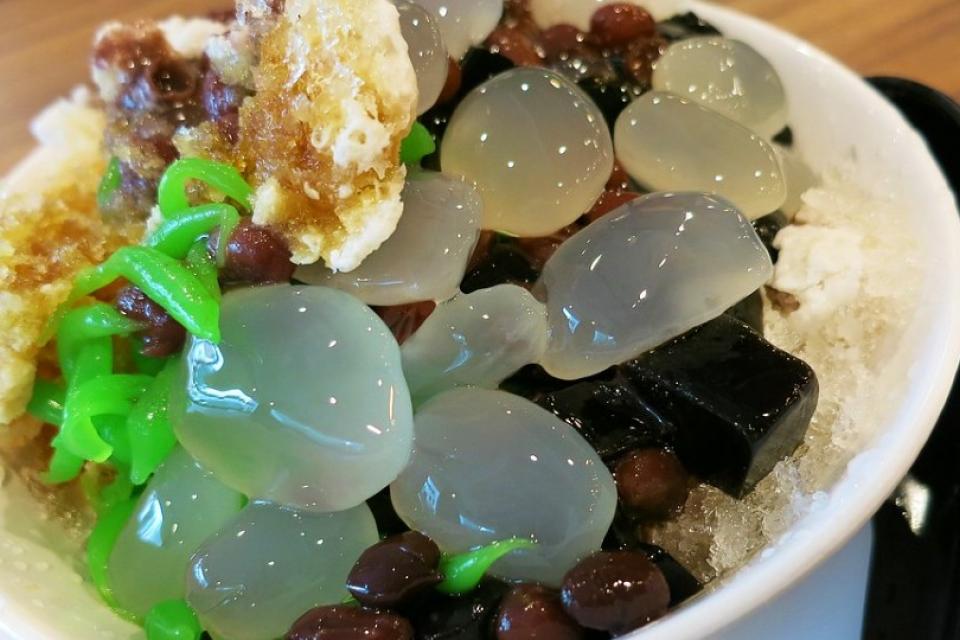Many of us love the Singapore cold dessert ice-kacang (Bean Ice) and probably wondered where the large translucent ovals on top of it came from? These are Attap palm seeds. Image Credit
They are the immature fruits of the Nipah palm also known as the Nypa fruticans. It is one of the few palms that grows well in mangrove conditions. It is commonly found growing in dense clusters with their fronds growing out from the soft mud. The leaves are used for roof thatching in "attap houses". While the Nipah palm may look trunkless, the trunk actually lies horizontally underground. and only the leaves and flower stalk grow upwards above the surface.
The flowers are a globular inflorescence of female flowers at the tip with catkin-like red or yellow male flowers on the lower branches. The flower then produces woody nuts arranged in a globular cluster on a single stalk. The nuts upon ripening, separate from the ball and float away on the tide, to be carried to other places.
This palm is native to many countries including Singapore, Malaysia, China, Myanmar, Cambodia, Thailand, Vietnam, Philippines, Queensland, and the Australian Northern Territory.
The flower cluster can be ‘tapped’ to yield a sweet, edible sap that is collected to produce local alcoholic beverages called tuba, bahal, or tuak. The fruit cluster is ready to be tapped when the unripe fruits are at their peak sweetness. The Attap seeds or better known as Attap chee, are collected as a byproduct of the sap harvesting process.
The seeds themselves are sweet, translucent, gelatinous balls and commonly used as a dessert ingredient in many countries including Thailand, Malaysia, Philippines and Singapore When cooled and served in syrup, they make an excellent dessert on its own too.










